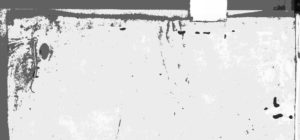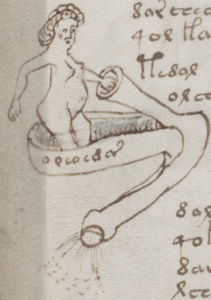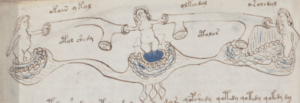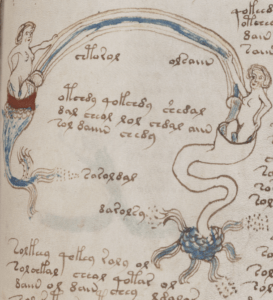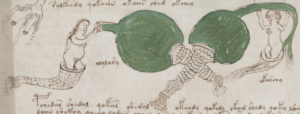If you hadn’t already heard, a Voynich Manuscript-themed virtual conference has recently been announced for 30th November to 1st December 2022: and its organisers have put out a call for papers.
Me, I have at least twenty ideas for topics, all of which I think could/should/would move the state of research forward. But my plan is actually to write up as many of them as I can in posts here, and let people freely take them to develop as their own, or (my preference) to form impromptu collaborations (via the comments section here, or via a thread on voynich.ninja, whatever works for you) to jointly pitch to the organisers.
I’ll start with what I think is the most obvious topic: DNA gathering analysis. I’ll explain how this works…
Quires vs Gatherings
Though some people like to oppose it, by 2022 Voynich researchers really should have fully accepted the idea that many of the Voynich’s bifolios have, over the centuries, ended up in a different nesting/facing order to their original nesting/facing order. There is so much supporting evidence that points towards this, not least of which is the arbitrary & confused interleaving of Herbal A and Herbal B bifolios.
Consequently, there is essentially zero doubt that the Voynich Manuscript is not in its original ‘alpha’ state. Moreover, good codicological evidence suggests that the original alpha state was not (bound) quires but instead (unbound) gatherings, because the quire numbering seems to have been added after an intermediate shuffling stage.
The big codicological challenge, then, is to work out how bifolios were originally grouped together (into gatherings), and how bifolios within each gathering were nested – i.e. the original ‘alpha’ state of the Voynich Manuscript.
Yet without being able to decrypt its text, we have only secondary clues to work with, such as tiny (and often contested) contact transfers. And because many of the (heavy) paint contact transfers (such as the heavy blue colour) seem to have happened much later in the manuscript’s lifetime, many of the contact transfers probably don’t tell us anything about the original state of the manuscript.
In Chapter 4 “Jumbled Jigsaws” (pp.51-71) of my (2006) book “The Curse of the Voynich”, I did my best to use a whole range of types of clue to reconstruct parts of the original folio nesting/facing order. Even so, this was always an uphill struggle, simply because we collectively had no properly solid physical forensic evidence to move this forward in what you might consider a systematic way.
From Gatherings to Vellum Sheets
However, a completely different way of looking at a manuscript is purely in terms of its material production: how were the pages in a gathering made up?
If a vellum manuscript is not a palimpsest (i.e. using previously-used vellum that has been scraped clean), it would typically have started as a large vellum sheet, which would then have been folded down and cut with a knife or shears or early scissors into the desired form. Given the unusual foldout super-wide folios we see in the Voynich Manuscript, I suspect there is almost no chance that these sheets were pre-cut.
As such, the normal process (e.g. for book-like sections) would have been to fold a sheet in half, then in half again, and then cut along the edges (leaving the gutter fold edge intact) to form a small eight-page gathering. This is almost certainly what happened when the Voynich Manuscript was made, i.e. it was built up over time using a series of eight-page gatherings, each from a single sheet.
It’s also important to remember that vellum was never cheap (and it took most of the fifteenth century for the price of paper to become anything less than a luxury item too). Hence even larger fold-out sheets would have not been immune from this financial pressure: so where possible, what remained of a vellum sheet after a foldout had been removed would typically have had to have been used as a bifolio.
The reason this is important is that where bifolios of a gathering were formed from a single sheet of vellum, they would all necessarily share the same DNA. And so this is where the science-y bit comes in.
Enter the DNA Dragon
Essentially, if you can take a DNA swab (and who in the world hasn’t now done this?) of each of the Voynich Manuscript’s bifolios, you should be able to match them together. There is then a very high probability that these matches would – in almost all cases – tell you what the original gatherings were.
The collection procedure appears – from this 2017 New Scientist article – to be painfully simple: identify the least handled (and text-free and paint-free) parts of each bifolio, and use a rubber eraser to take a small amount of DNA from the surface. Other researchers (most famously Timothy Stinson) are trying to build up horizontal macro-collections of medieval vellum DNA: but because the Voynich Manuscript is not (yet) readable, a micro-collection of the DNA in its bifolios would offer a very different analytical ‘turn’.
Though DNA has famously been used for many types of forensic analysis (there are entire television channels devoted to this), determining the original gathering order of an enciphered manuscript is not yet – as far as I know – one of them. But it could be!
Finally: once the gatherings have been matched, close examination (typically microscopic) to determine the hair / flesh side of each bifolio should help further reduce the possible number of facing permutations within each gathering. Remember, the normal practice throughout the history of vellum was that a folded gathering or quire will almost always end up in a flesh-facing-flesh and skin-facing-skin state.
Why is this Important?
As far as understanding the codicology of an otherwise unreadable document goes, DNA gathering matching would be hugely important: it would give clarity on the construction sequence of every single section of the Voynich Manuscript. This, in turn, would cast a revealing light on contentious issues of document construction and sectioning that have bedeviled researchers for years.
This would include not only the relationship of Herbal A bifolios to Herbal B bifolios (a debate going at least back to Prescott Currier), but also the more modern debates about Q13A vs Q13B, Q20A vs Q20B, and the relationship between Herbal A and the various Pharma A pages.
The biggest winners from reconstructing the manuscript’s alpha state would be researchers looking to find meaning and structure in the text. As it is, they’re trying to infer patterns from a document that appears to have been arbitrarily shuffled multiple times in its history. Along these lines, there’s a chance we might be able to use this to uncover a block-level match between a section and an external (unencrypted) text, which is something I have long proposed as a possible way in to the cipher system.
There is also a strong likelihood that folio numbers might well be encrypted (e.g. in the top line of text) – historically, many complicated cipher systems have been decrypted by first identifying their underlying number system, so this too is an entirely possible direct outcome of this kind of research. It would additionally make sense for anyone trying to understand the different scribal hands to be able to situate those contributions relative to the manuscript’s alpha state rather than to its final (omega) state.
In those few sections where we have already been able to reconstruct the manuscript’s alpha state (e.g. Q9), we have uncovered additional symmetries and patterns that were not obviously visible in the shuffled state. Imagine how much more we would be able to uncover if we could reconstruct the alpha state of the entire manuscript!
So… Why Haven’t You Done This Already, Nick?
I’ve been trying for years, really I have. And through that time this basic proposal has received a ton of negativity and push-back from otherwise smart people (who I think really should have known better).
But the times they are (always) a-changing, so maybe it’s now the right time for someone else completely to try knocking at broadly this same door. And if they do, perhaps they’ll find it already open and waiting for them. A moment’s thought should highlight that there’s certainly a great deal – in fact, an almost uniquely large amount – of new, basic stuff to be learnt about the Voynich Manuscript’s construction here.
Yet at the same I would caution that if you look at the list of proposed topic areas for the conference, this kind of physical analysis doesn’t really fit the organisers’ submission model at all. After first submitting a 1-2-page abstract by 30th June 2022, allowing only five weeks after acceptance (20th July 2022) to write a 5-9 page paper seems a bit hasty and superficial, as if the organisers aren’t actually expecting anybody to submit anything particularly worthwhile. But perhaps they have their specific reasons, what do I know?
(But then again, maybe you’d be best off phoning your aunt who works at the History Channel and get an in with a TV documentary-making company. If film-makers can squeeze nine series out of “The Curse of Oak Island”, you’d have thought they’d be all over this like a rash, right? Right?)
